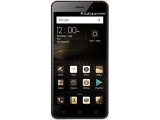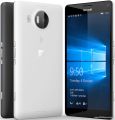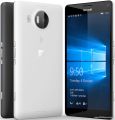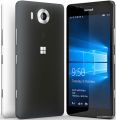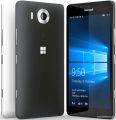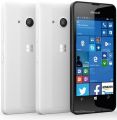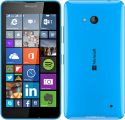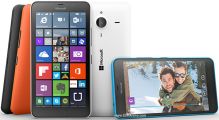Microsoft Lumia 640 XL Prices
Important Note.
- All prices are in Pakistani Rupee (PKR)
- Prices may vary at stores and our effort will be to provide you with the updated prices.
- The latest price of Microsoft Lumia 640 XL was obtained on 17 مئی, 2019. The prices at the original stores had been updated on the respective mentioned dates.
- Find out WhatMobile price has dropped in Pakistan by selecting Notify Price Drop button
- Find out WhatMobile has better specifications by clicking Add To Compare Button find out what Mobile has better reviews by visiting our reviews section
- Find out WhatMobile is cheaper on which retailer by clicking Compare prices from retailers button
Search Terms
- Microsoft Lumia 640 XL
Specifications
| GENERAL | |
| 2G Network | GSM 850 / 900 / 1800 / 1900 |
|---|---|
| 3G Network | HSDPA 850 / 900 / 1900 / 2100 |
| Sim | Micro-SIM |
| Announced | 05/05/2015 |
| Status | Available. Released 2015, April |
| BODY | |
| Dimensions | 157.9 x 81.5 x 9 mm (6.22 x 3.21 x 0.35 in) |
| Weight | 171 g (6.03 oz) |
| DISPLAY | |
| Display Size | 5.7 inches (~69.1% screen-to-body ratio) |
| MultiTouch | Yes |
| Protection | Corning Gorilla Glass 3 - ClearBlack display |
| SOUND | |
| AlertTypes | Vibration; MP3, WAV ringtones |
| LoudSpeaker | Yes |
| 3.5mm jack | Yes |
| MEMORY | |
| CardSlot | microSD, up to 128 GB |
| Internal | 8 GB, 1 GB RAM |
| DATA | |
| GPRS | Yes |
| EDGE | Yes |
| Speed | HSPA 42.2/5.76 Mbps |
| WLAN | Wi-Fi 802.11 b/g/n, DLNA, hotspot |
| Blue Tooth | v4.0, A2DP |
| NFC | Yes |
| USB | microUSB v2.0 |
| CAMERA | |
| Camera Primary | 13 MP, 4128 x 3096 pixels, Carl Zeiss optics, autofocus, LED flash |
| Camera Features | 1/3'' sensor size |
| CameraVideo | 1080p@30fps |
| CameraSecondary | 5 MP, 1080p |
| FEATURES | |
| Processor Cores | Quad-Core |
| OS | Microsoft Windows Phone 8.1 with Lumia Denim |
| CPU | Quad-core 1.2 GHz Cortex-A7 |
| Sensors | Accelerometer, proximity, compass, sensor core |
| Messaging | SMS (threaded view), MMS, Email, Push Email, IM |
| Browser | HTML5 |
| Radio | FM radio |
| GPS | Yes, with A-GPS, GLONASS, Beidou |
| Java | No |
| Colors | Matte cyan, Orange, Black, Matte white, Glossy white |
| Others | - MP3/WAV/eAAC+/WMA player - MP4/H.264/WMV player - OneDrive (30 GB cloud storage) - Document viewer - Photo/video editor |
| BATTERY | |
| Battery | Li-Ion 3000 mAh battery |
| StandBy | Up to 936 h (2G) / Up to 936 h (3G) |
| TalkTime | Up to 31 h 20 min (2G) / Up to 23 h 40 min (3G) |
| MISC | |
Reviews
Microsoft used its presentation at MWC 2015 to announce the launch of the phablet-sized Lumia 640 XL, the bigger brother of the Lumia 640, its latest foray into the midrange market, which was also announced.
The Lumia 640 XL will be available globally in April, and the 3G version will go on sale for €189 (around £137, US$211, AU$272). The 4G LTE version will retail for €219 (around £159, US$245, AU$315), both of which are reasonable prices. Microsoft has indicated that it wants businesses to go for the Lumia 640 XL because they could get three handsets for the price of one of its competitor's flagships.
With a screen size of 5.7 inches, compared to the 5-inch display of the 640, the Lumia 640 XL is one of Microsoft's largest smartphones, just shy of the Lumia 1520's 6-inch behemoth.
Although the size of the screen is increased with the Lumia 640 XL, the resolution remains the same at 1080p, which means the smaller Lumia 640's screen is sharper thanks to an increased pixel density.
However during my time with the Lumia 640 XL, Windows Phone 8.1 (an upgrade to Windows 10 for Phones is promised later this year) looked good on the larger handset. The ability to resize live tiles into tiny squares was introduced with Windows Phone 8.1, though on smaller screens this often made the interface difficult to use. On the Lumia 640 XL's larger display, however, it is a lot more useful.
The performance of Windows Phone 8.1 was fine on whole with the Lumia 640 XL, if nothing spectacular. Considering the the mid-range specifications, which include a Qualcomm Snapdragon 400 SoC with a quad-core 1.2GHz CPU and 1GB of RAM, this should come as no surprise.
We've heard that the internal storage will be 16GB, though Microsoft has yet to confirm this. I was told when I spoke to a Microsoft representative that this storage can be expanded with a microSD card (up to 128GB), or via a subscription to the OneDrive cloud storage service.
There's no easy access to the microSD slot from the chassis; instead you need to remove the back to insert and remove the memory cards. Perhaps not the greatest hardship in the world, but it could quickly become annoying, especially if you often swap microSD cards.
Despite its size the Lumia 640 XL is comfortable to hold, though that may be because I have been using a Nexus 6 recently. If you've never held a phablet phone before, the increase in dimensions could come as a shock.
Placing the Nexus 6 and the Lumia 640 XL side-by-side showed only a small difference in body size. If you don't fancy a big-screen device, or you have trouble crammng a phablet-sized handset into your pocket, then you'll want to avoid the Lumia 640 XL.
However if you don't mind larger devices, the Microsoft Lumia 640 XL was light and felt good in the hand, though the plastic body leaves you in no doubt that this is a mid-range smartphone.
Just because it's plastic doesn't mean it's not well built, and it felt that the Lumia 640 XL could withstand a few drops. Sadly with the ever-watchful Microsoft representative present as I examined the 640 XL, I decided not to test this out.
On the bottom of the handset sits a micro USB slot for charging and getting data onto the phone while the 3.5mm headphone jack sits on the top edge of the handset.
The design of the Lumia 640 XL is very similar to the Lumia 640, except writ large. The increase in body size to accommodate the larger screen works well with the Lumia 640's simplistic design, though it does end up magnifying the deficiencies as well.
The problem is that once again the design of the Lumia 640 (and by extension, the Lumia 640 XL) is rather uninspired, and there's nothing new here. If you've seen the bright plastic design of the Nokia Lumia 635 or any other earlier Lumia, then you know what you're going to get here.
The edges are a little rounder, and the body a bit thinner, but otherwise this is your basic mid-range Lumia design. Yay. Microsoft promised at MWC 2015 that high-end devices will be coming towards the end of the year, so let's hope it decides to push the boat out design-wise then. At the moment, there's little to be excited about here.
The larger body has at least resulted in 3000mAh battery being included, a decent increase over the Lumia 640's 2500 mAh battery. The fact that the larger screen keeps the 1080p resolution means we should see a pretty decent battery life, something that large screen smartphones with ridiculously high resolutions struggle with.
The rear camera is 13MP, and slightly protrudes from the back of the phone. It's more pronounced than the iPhone 6's bulging snapper, and means that if you're a fan of lying your phone face up and flat on a table, the Lumia 640 XL's design could prove annoying. There's also a front facing camera, though Microsoft was coy about the details, promising only that it will be 'great for Skype'.
Microsoft promises all the updates and new features of the Lumia camera app to be present and correct when the Lumia 640 XL launches, so expect fast auto focus, Rich Capture HDR effects and other nifty tools.
Early Verdict
If you fancy a phablet sized smartphone but don't want to pay the high prices that many, such as the Nexus 6 and iPhone 6 Plus, demand, then the Microsoft Lumia 640 XL could be of interest. The lower resolution and current lack of support for Windows Phone (though Microsoft promises this will change with the 'Universal Apps' platform) might be a few too many compromises though.
Write Your Own Review
My Recent Reviews
- Be first to post review for this product.
comments powered by Disqus




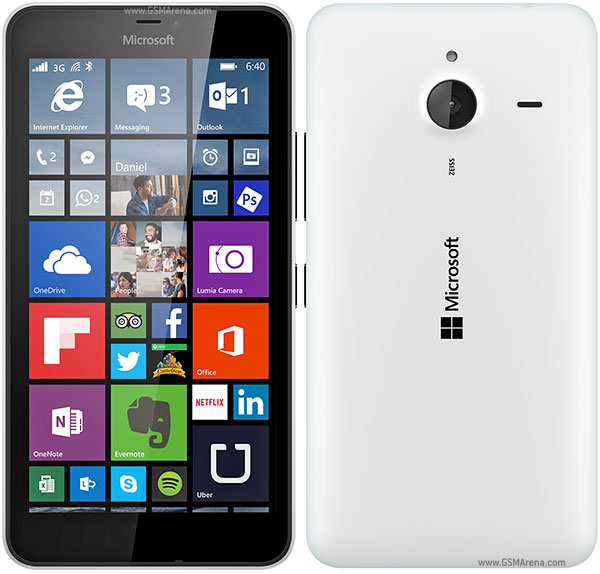
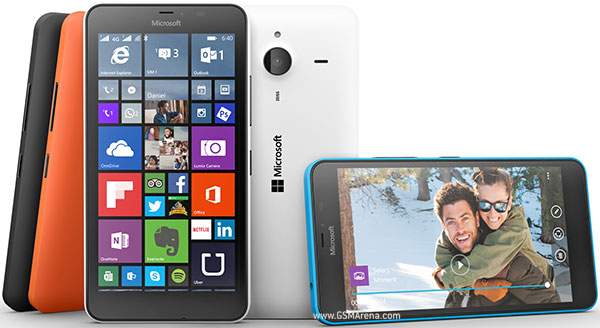


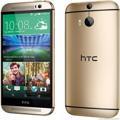
.jpg)
